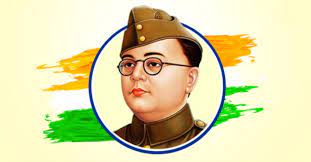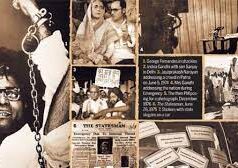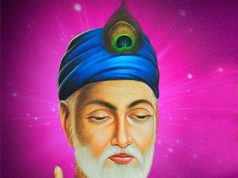
-M Sudarshan Reddy
Subhas Chandra Bose is a successful Pragmatic politician whose sacrifices are instrumental in India’s freedom. His impact on the 20th century is white washed by the ‘Marxian Historians’. On the 125th Birth anniversary of Netaji, let’s look into one of the prominent but relatively unknown aspects of India’s independence.
Indian National Army trials in Redfort, The Royal Indian Navy revolt:
Japan’s surrender at the end of the second war and mystery riddled news of Netaji’s plane crash led to the surrender of the remaining elements of the Indian National Army. The INA prisoners were then repatriated to India and some tried for treason. A total of 16,000 of the INA’s 43,000 recruits were captured, of whom around 11,000 were interrogated by the Combined Services Directorate of Investigation Corps (CSDIC).
Between November 1945 and May 1946, approximately ten court-martials were held in public at the Red Fort in Delhi. Claude Auchinleck, the Commander-in-Chief of the British-Indian army, hoped that by holding public trials in the Red Fort, public opinion would turn against the INA. but contrary to their expectations, public sympathy and support for the INA soldiers became very strong. The stories of Subhas Chandra Bose, INA’s fight during the Siege of Imphal and in Burma were seeping into the glaring public-eye at the time. These, received through the wireless sets and the media, fed discontent and ultimately inspired the sailors to strike .Indian Naval personnel began calling themselves the “Indian National Navy” and offered left-handed salutes to British officers.
By 20th February 1946, Bombay naval establishments had been overtaken by mutineers. It encompassed 45 warships,10–12 shore establishments, 11 auxiliary vessels and four flotillas, overtaken by around 10,000 naval ratings. The mutiny had spread to all Royal Indian Navy sub stations in India, located at Madras, Cochin, Vizagapatam, Jamnagar, Calcutta and Delhi.
The first trial, that of Shah Nawaz Khan, Gurubaksh Singh Dhillon and Prem Sahgal was held between November and December 1945. In spite of aggressive and widespread opposition to the continuation of the court-martial, it was completed and sentenced to deportation for life. The sentence, however, was never carried out. Immense public pressure, demonstrations, and riots forced Claude Auchinleck to release all three defendants.Within three months, 11,000 soldiers of the INA were released after cashiering and forfeiture of pay and allowance.
Clement Attlee, the then PM of Britain announced the Cabinet Mission to India following the mutiny.On the recommendation of Mountbatten and with the agreement of Jawaharlal Nehru, former soldiers of the INA were not allowed to join the new Indian Armed Forces as a condition for independence.
Babasaheb Ambedkar In an interview with BBC’s Francis Watson elucidated the reason why the British left India in 1947: “The national army that was raised by Subhas Chandra Bose. The British had been ruling the country in the firm belief that whatever may happen in the country or whatever the politicians do, they will never be able to change the loyalty of soldiers. That was one prop on which they were carrying on the administration. And that was completely dashed to pieces. They found that soldiers could be seduced to form a party — a battalion to blow off the British”
In 1967 during a seminar discussion marking the 20th anniversary of Independence; it was revealed by the British High Commissioner of the time John Freeman, that the mutiny of 1946 had raised the fear of another large-scale mutiny along the lines of the Indian Rebellion of 1857, The British were petrified of a repeat of the 1857 Mutiny, since this time they feared they would be slaughtered to the last man.
In the 20th century Netaji led the INA in fighting against the colonial Britishers just like George Washington led the Continental Army to fight the Britishers in the 18th century. Washington went on to become the first president of the free United States of America. Whereas India did gain Independence but unfortunately lost Netaji underl unknown, mysterious conditions. Every patriotic Indian wonders what would have been India’s fate had Netaji became the leader of independent India.
Despite great sacrifices Netaji and the Indian National Army did not get their due recognition in Post independent India. Only on 70th Republic day(26th Jan 2019) four veterans of INA —Parmanand Yadav, Lalti Ram, Hira Singh and Bhaagmal —, got pride of place in the parade as they rode down the Rajpath in open jeeps with portrait of Netaji hung from the side of their vehicles. The Government of India announced Netaji Jayanti as Parakram Divas and celebrated for the first time in 2021 on his 124th birth anniversary. Recently the prime minister has announced that Subhash Chandra Bose’s statue will be installed under the grand canopy near the National War Memorial.
Even though very little and very late, Netaji and INA got at least some recognition. Much more needs to be done. The contributions of many other revolutionaries need to be brought to the public domain.
Author: PhD, Political science, University of Hyderabad














